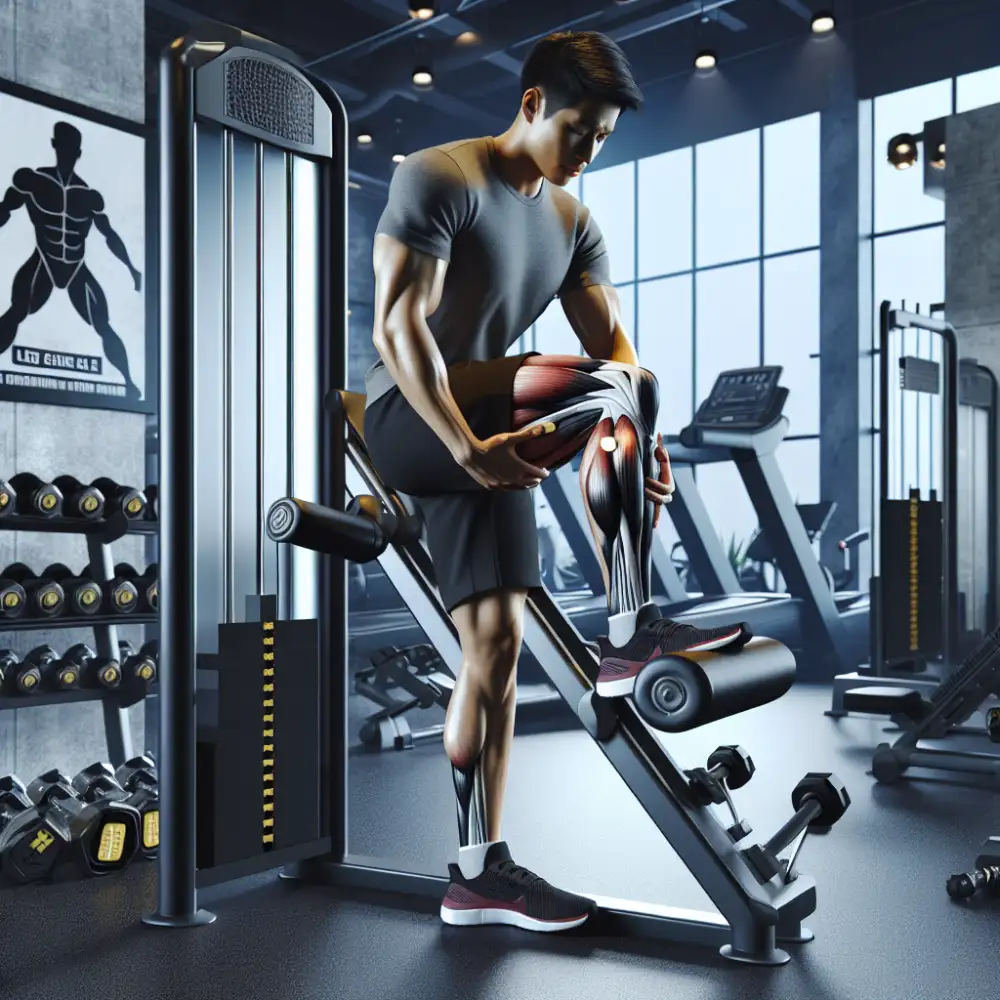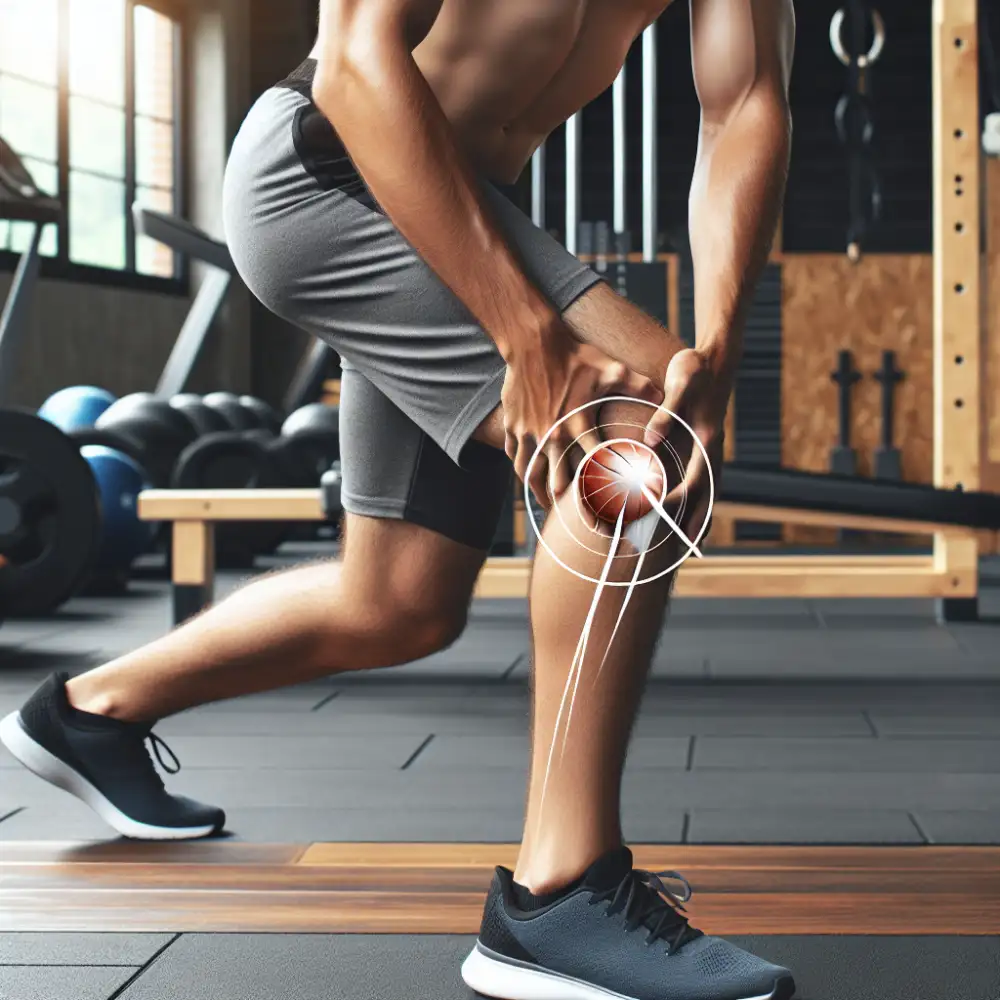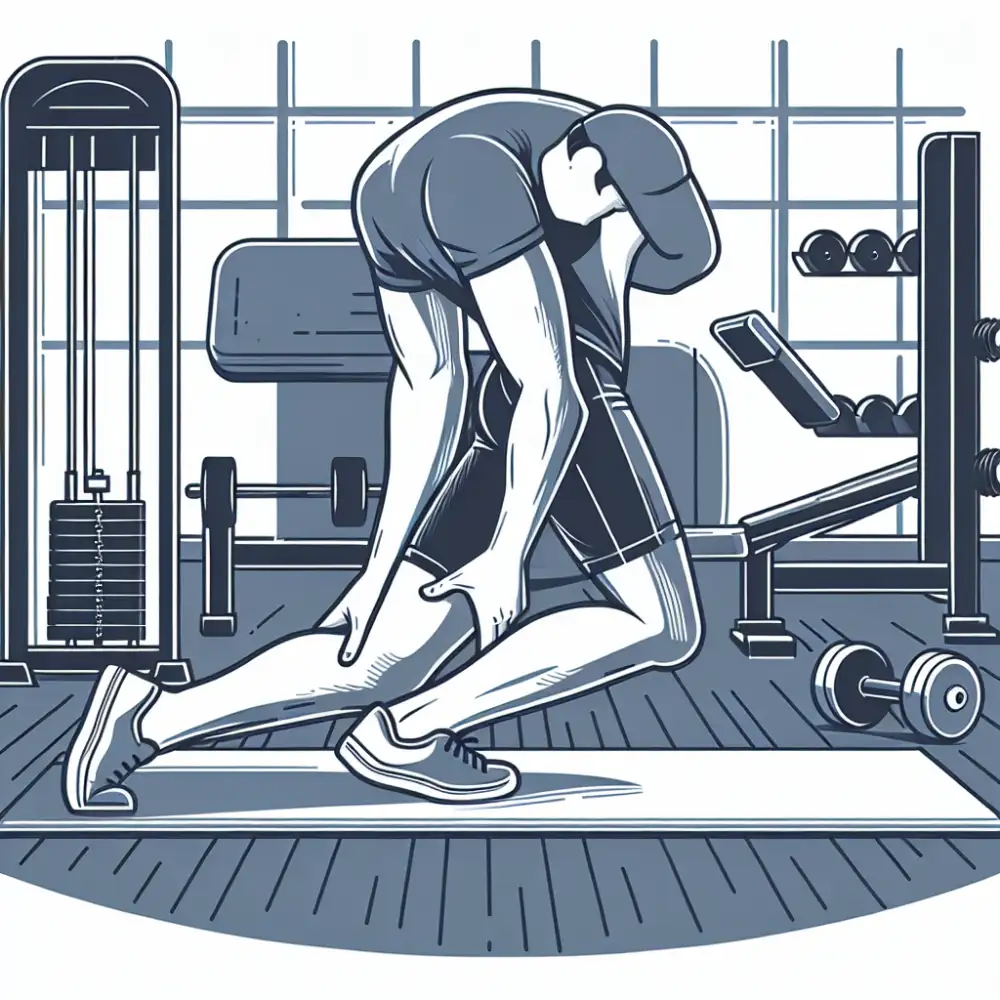Tone: Informal Target audience: Fitness enthusiasts Leg Squeeze Exercise: Your Ticket to Thigh-Toning Heaven

What is a leg squeeze exercise?
The leg squeeze exercise is a simple yet effective exercise that targets the inner thigh muscles, specifically the adductors. This exercise involves lying on your back with your knees bent and your feet flat on the floor. Place a pillow, a rolled-up towel, or a small exercise ball between your knees. This is your starting position. From here, squeeze your legs together as if you are trying to crush the object between your knees. Hold the squeeze for a few seconds, then slowly release. That’s one repetition.
The leg squeeze exercise is a great way to tone and strengthen your inner thighs. It can also help to improve your balance and stability. This exercise is often used in physical therapy to help people recover from injuries. It is a low-impact exercise that can be done by people of all fitness levels.
Benefits of Leg Squeezes
- Increased strength and endurance in the inner thigh muscles
- Improved hip stability
- Reduced risk of groin injuries
- Enhanced athletic performance in activities that require lateral movement, such as running, skating, and swimming
- Improved balance and coordination
- Relief from lower back pain
If you are new to exercise, start with a few repetitions and gradually increase the number of repetitions as you get stronger. You can also increase the challenge by holding the squeeze for a longer period or by using a thicker object between your knees.
| Feature | Leg Squeeze Exercise | Standard Squat |
|---|---|---|
| Primary Muscles Worked | Inner thighs (adductors) | Quadriceps, Glutes, Hamstrings |
| Difficulty Level | Beginner | Beginner to Intermediate |
| Equipment Required | None | None (can be done with weights) |
| Suitable for Beginners | Yes | Yes (with proper form) |
How to Do Leg Squeezes
- Lie on your back with your knees bent and your feet flat on the floor.
- Place a pillow, a rolled-up towel, or a small exercise ball between your knees.
- Engage your core muscles and press your lower back into the floor.
- Squeeze your legs together as if you are trying to crush the object between your knees.
- Hold the squeeze for a few seconds, then slowly release.
- Repeat for the desired number of repetitions.
If you experience any pain while doing this exercise, stop and consult with a healthcare professional.
Muscles worked
This exercise primarily targets the adductors, a group of muscles located on the inner thigh. These muscles play a crucial role in bringing your legs together. Think about squeezing a pillow between your knees – that’s your adductors working! Specifically, the adductor longus, adductor brevis, and gracilis are heavily engaged during this exercise.

But that’s not all! Squeezing your legs together also activates your inner quads (vastus medialis) and even engages your core muscles to a degree, as they work to stabilize your body during the movement. This makes it a surprisingly well-rounded exercise, despite its simplicity.
Benefits of leg squeezes
Leg squeezes, despite their seeming simplicity, offer a surprising number of benefits, particularly for those seeking to improve lower body strength and stability. This exercise primarily targets the inner thigh muscles, known as the adductors. Strong adductors are crucial for stabilizing the pelvis, improving balance, and enhancing athletic performance in activities like running and jumping.
One of the key benefits of leg squeezes is their accessibility. They can be performed virtually anywhere, anytime, without any special equipment. This makes them an ideal exercise for people of all fitness levels, from beginners to seasoned athletes.
Regularly incorporating leg squeezes into your routine can lead to increased lower body strength and endurance. This can translate into improved performance in various physical activities, as well as everyday tasks like climbing stairs or carrying heavy objects.
Furthermore, leg squeezes can contribute to improved core stability. By engaging the inner thigh muscles, you also activate the deep core muscles responsible for stabilizing the spine and pelvis. This can lead to better posture, reduced risk of lower back pain, and enhanced overall athleticism.
For individuals recovering from injuries or dealing with certain medical conditions, leg squeezes can be a valuable part of a rehabilitation program. They provide a gentle yet effective way to strengthen the inner thigh muscles without putting excessive stress on the joints.
In addition to their physical benefits, leg squeezes can also have a positive impact on mental well-being. Like any form of exercise, they release endorphins, which have mood-boosting effects. Moreover, the focused nature of the exercise can promote mindfulness and stress reduction.
Leg squeeze variations
There are many ways to spice up your leg squeeze routine and target different muscle groups. Here are a few variations to try:
1. Inner Thigh Squeeze with Pilates Ball: Place a small Pilates ball between your knees while lying on your back with your knees bent. Squeeze your inner thighs together, holding for a few seconds, then release. This variation adds extra resistance and helps engage the inner thigh muscles more effectively.

2. Side-Lying Leg Squeeze: Lie on your side with your legs extended straight. Lift your top leg slightly off the bottom leg and squeeze your inner thighs together. Hold for a few seconds, then release. This variation targets the inner thighs and outer hips.
3. Standing Leg Squeeze with Resistance Band: Stand with your feet hip-width apart and loop a resistance band around your thighs, just above your knees. Step sideways against the resistance of the band, squeezing your legs together as you move. This variation adds resistance and works the inner and outer thighs.
4. Bridge Leg Squeeze: Lie on your back with your knees bent and feet flat on the floor. Lift your hips off the ground to form a straight line from your shoulders to your knees. Place a Pilates ball or a rolled-up towel between your knees. Squeeze your legs together, holding for a few seconds, then release. This variation engages the inner thighs, glutes, and core.
5. Plank Leg Squeeze: Start in a plank position with your forearms on the ground and your body in a straight line from head to heels. Place a Pilates ball or a rolled-up towel between your thighs. Squeeze your legs together, holding for a few seconds, then release. This variation strengthens the inner thighs, core, and shoulders.
Remember to start with a comfortable resistance level and gradually increase it as you get stronger. Focus on squeezing the muscles and maintaining proper form throughout the exercise. If you experience any pain or discomfort, stop immediately and consult a healthcare professional.
How to do leg squeezes
Lie face up with your knees bent and feet flat on the floor, hip-width apart. Your arms can rest by your sides. Imagine you are holding a beach ball between your thighs. Engage your abdominal muscles and gently squeeze your inner thighs together, as if you are trying to squeeze the imaginary ball. Hold the squeeze for a few seconds, feeling the contraction in your inner thighs and pelvic floor muscles. Slowly release the squeeze, returning to the starting position. Repeat for the desired number of repetitions. You can adjust the difficulty of the exercise by increasing the hold time or the number of repetitions. If you experience any pain or discomfort, stop the exercise and consult with a healthcare professional.
Common mistakes to avoid
Many people make these mistakes, which can reduce the effectiveness of the exercise or even lead to injury:
Squeezing too hard. You should feel the muscles working, but you shouldn't be in pain. If you squeeze too hard, you could strain a muscle. Start slowly and gradually increase the intensity.
Holding your breath. Remember to breathe normally throughout the exercise. Holding your breath can lead to a spike in blood pressure.
Arching your back. Keep your back flat on the floor to avoid putting unnecessary stress on your spine. Engage your core muscles to help with this.

Using your inner thighs only. Engage your glutes and pelvic floor muscles as well. Imagine you are trying to lift your hips off the floor using only these muscles.
Not engaging your core. Your core muscles help to stabilize your body during the exercise. Engage them by pulling your belly button in towards your spine.

Not being consistent. Like any exercise, leg squeezes work best when you do them regularly. Aim to do them 3-4 times per week.
By avoiding these common mistakes, you can get the most out of your leg squeeze exercises and improve your overall fitness. Remember to listen to your body and stop if you feel any pain.
Safety tips and precautions
Before starting any new exercise routine, it's essential to consult with your doctor or a qualified healthcare professional. They can help you determine if the exercise is appropriate for your fitness level and any underlying health conditions you may have.
General Precautions
Warm-up: Always begin with a proper warm-up to prepare your muscles for exercise. This could include light cardio, such as jogging or jumping jacks, and dynamic stretches, like leg swings and torso twists.
Proper form: Maintain correct posture and alignment throughout the exercise. Avoid any movements that cause pain or discomfort. Focus on engaging the correct muscles and avoid using momentum.
Gradual progression: Start with a manageable number of repetitions and sets, gradually increasing them as your strength improves. Don't push yourself too hard too quickly, as this can lead to injury.
Listen to your body: Pay attention to any pain or discomfort during or after the exercise. If you experience any sharp or persistent pain, stop immediately and consult with a healthcare professional.
Stay hydrated: Drink plenty of water before, during, and after your workout to stay hydrated.
Specific Precautions for Leg Squeeze Exercises
Existing injuries: If you have any pre-existing injuries to your hips, back, or legs, consult with your doctor or physical therapist before performing leg squeezes. They can advise you on modifications or alternative exercises.
Pregnancy: Women who are pregnant should consult with their doctor before performing leg squeezes, as some variations may not be suitable.
Pelvic floor dysfunction: Individuals with pelvic floor dysfunction should approach leg squeezes with caution. It's essential to engage the pelvic floor muscles correctly and avoid any exercises that exacerbate symptoms.


Remember, safety should always be your top priority when exercising. By following these tips and precautions, you can help minimize the risk of injury and enjoy the benefits of leg squeeze exercises.
Leg squeezes for specific goals
Leg squeezes, despite their seeming simplicity, can be targeted to achieve specific fitness goals. By modifying the basic exercise, you can engage different muscle groups and increase the challenge.
Want to tone your inner thighs? Try isometric holds. Lie on your back with knees bent and feet flat on the floor. Place a pillow or soft ball between your knees. Squeeze your legs together, holding the contraction for 30 seconds. Repeat for multiple sets. This variation is great for engaging the adductors, the muscles responsible for bringing your legs towards the midline of your body.
Looking for a core challenge? Incorporate leg squeezes into your plank routine. Assume a high plank position with your forearms on the floor and body in a straight line. Place a small ball or rolled-up towel between your thighs, just above your knees. Maintain the plank while squeezing your legs together for a set amount of time or repetitions. This exercise not only works your core but also engages your inner thighs and glutes.
Need to strengthen your pelvic floor muscles? Leg squeezes can help. Lie on your back with knees bent and feet flat on the floor. Imagine you are trying to stop the flow of urine. This action engages your pelvic floor muscles. While maintaining this contraction, squeeze your legs together for a few seconds, then release. Repeat for multiple repetitions. This exercise can be beneficial for improving bladder control and overall pelvic floor health.
Remember to consult with a healthcare professional before starting any new exercise program. Start slowly and gradually increase the intensity and duration of your workouts as you get stronger.
Alternatives to leg squeezes
While leg squeezes are a great way to engage your inner thighs, variety keeps your workouts interesting and challenges your muscles in new ways. Here are some effective alternatives to leg squeezes:
- Adductor Machine: This gym staple isolates your inner thigh muscles. Adjust the weight and seat to your comfort level and press your legs together against the resistance.
- Side-Lying Hip Adduction: Lie on your side with your bottom leg straight and your top leg bent at a 90-degree angle in front of you. Keeping your top foot on the floor, raise your bottom leg up towards the ceiling. This exercise targets your adductors without any equipment.
- Pilates Ball Squeeze: Place a small exercise ball between your knees while lying on your back with your knees bent. Squeeze the ball with your inner thighs, hold for a few seconds, and release. This variation adds an extra challenge to your core stability.
- Sumo Squats: Stand with your feet wider than shoulder-width apart, toes pointing outwards. Lower into a squat position, keeping your back straight and core engaged. As you stand back up, focus on squeezing your glutes and inner thighs.
- Lateral Band Walks: Place a resistance band around your ankles and stand with your feet hip-width apart, slightly bending your knees. Take small steps sideways, maintaining tension on the band. This exercise targets both your inner and outer thighs.
Remember to choose alternatives that align with your fitness level and goals. If you have any pre-existing conditions, consult with a healthcare professional before starting any new exercise routine.

Incorporating leg squeezes into your routine
Leg squeezes are a simple yet effective exercise that can be easily incorporated into your daily routine. This exercise primarily targets the inner thigh muscles, also known as the adductors. These muscles play a crucial role in stabilizing your hips and knees, improving your balance and lower body strength. The beauty of leg squeezes lies in their versatility. You can do them anytime, anywhere, whether you're sitting at your desk, watching TV, or even lying in bed.
To perform a basic leg squeeze, sit upright with your feet flat on the floor, shoulder-width apart. Place a rolled-up towel, a pillow, or a small exercise ball between your knees. Engage your core and maintain a straight back. Now, squeeze your inner thighs together, pressing firmly against the object between your knees. Hold the squeeze for a few seconds, feeling the contraction in your inner thighs, and then slowly release. Repeat this for 10-15 repetitions.
To amplify the intensity and engage more muscle groups, you can try leg squeeze variations. One effective variation is the lying leg squeeze. Lie on your back with your knees bent and feet flat on the floor. Place the object between your knees, as in the seated version. Engage your core and press your lower back into the floor. Squeeze your legs together, hold for a few seconds, and release. This variation not only works your inner thighs but also engages your core muscles, enhancing stability and strength.
Another variation is the standing leg squeeze, which adds an element of balance and coordination. Stand tall with your feet hip-width apart and place the object between your knees. Engage your core and maintain a straight posture. Squeeze your legs together, hold, and release. You can increase the challenge by performing this exercise on a soft surface like a yoga mat or a BOSU ball.
Regardless of the variation you choose, consistency is key. Aim to incorporate leg squeezes into your routine at least 3-4 times a week. As you get stronger, you can gradually increase the repetitions, sets, or the duration of the squeeze. Remember to listen to your body and stop if you experience any pain or discomfort. With regular practice, you'll notice improved lower body strength, stability, and muscle tone in your inner thighs.
Published: 20. 06. 2024
Category: fitness



